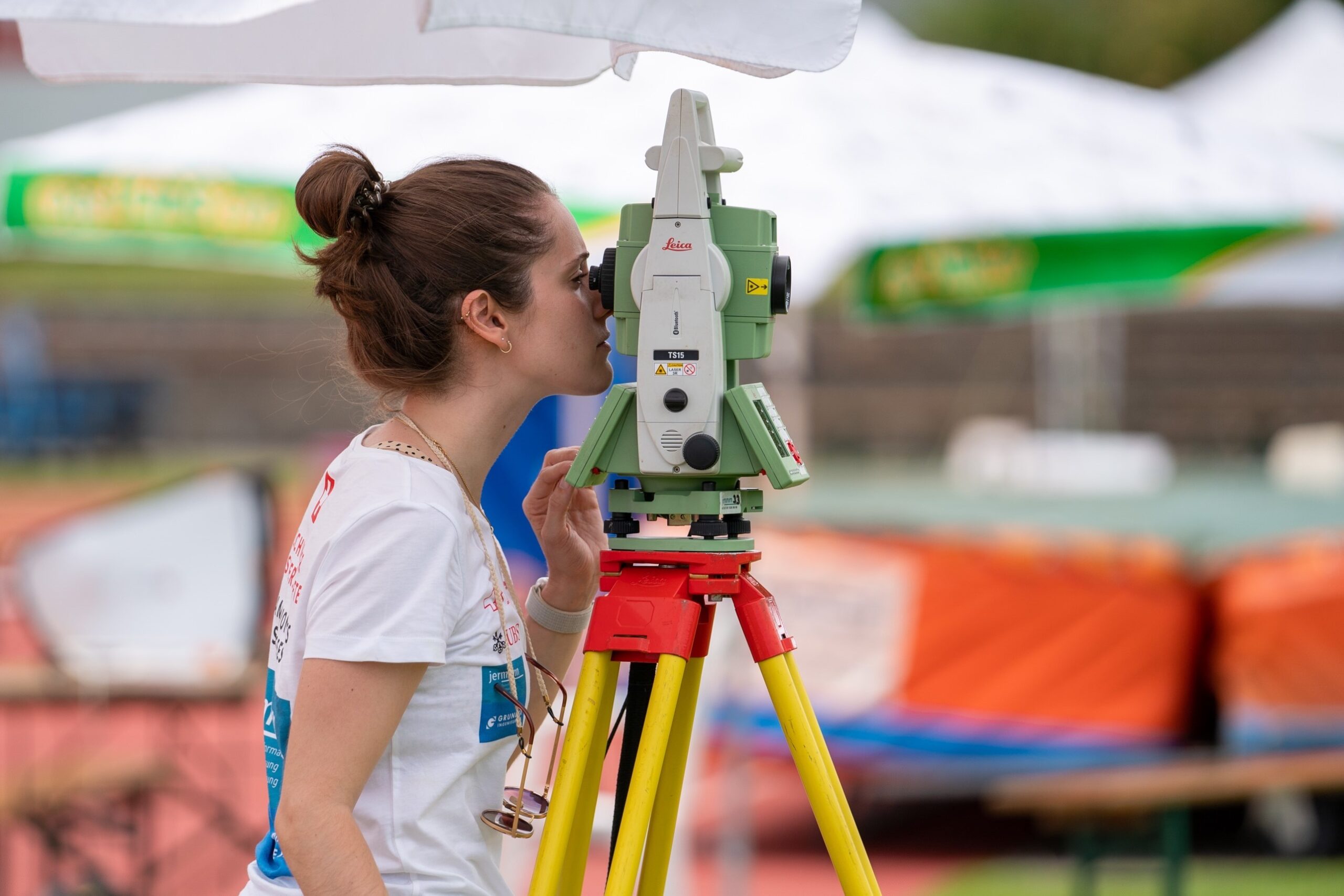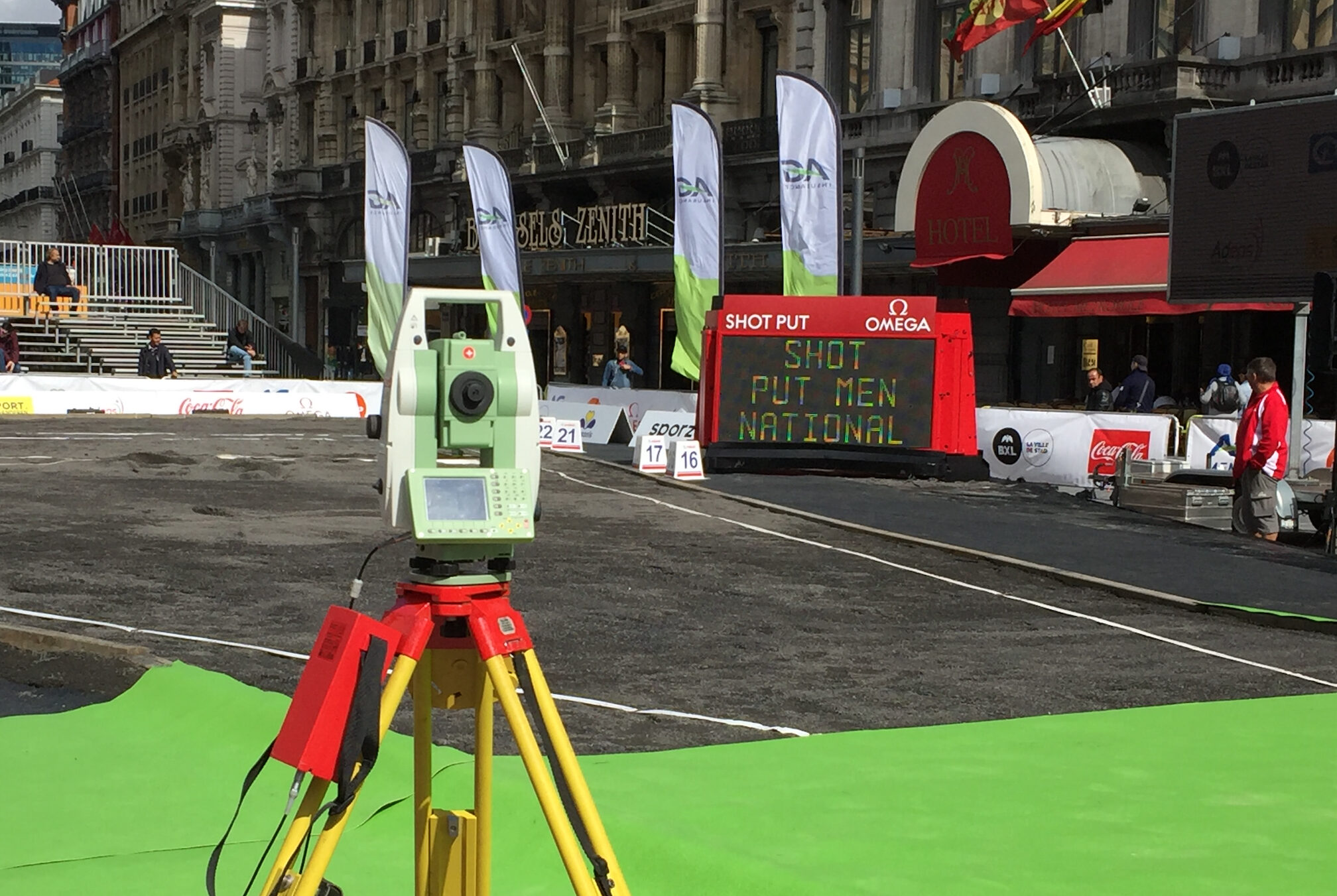The human eye can be fooled — unlike the latest technology. It ensures that sports become fairer. For over 30 years, high-precision solutions from Leica Geosystems, part of Hexagon, have been used at regional, national, and global athletics events, including the Olympic Games, to enhance fairness through accuracy.
Major sporting events, like the European Football Championship, have much at stake: titles, money, fame, and glory. Millimetres decide success or failure. For example, whether a striker is offside is a question of angles and differing perspectives when determined by the human eye. In response, the Video Assistant Referee (VAR) was introduced to enable fair decisions and support the referee.
High-accuracy measurements in track and field
State-of-the-art technology is a natural part of the sports world today. Whether football, ice hockey, Formula 1, alpine skiing or track and field — high-precision control and measurement instruments with special software are used to ensure fair decisions through accurate results. In track and field athletics, Leica Geosystems technology has been used for measuring distances and heights for more than 30 years, specifically in the disciplines of long jump, triple jump, shot put, javelin throw, discus throw, hammer throw, and pole vault.
“In Switzerland, regional surveying offices take over the measurements at local competitions,” explains Pascale Spychiger, geomatics technician and account manager at Leica Geosystems, which provides custom software for these events. Spychiger, once an active runner, knows how much this is appreciated: “Athletes at regional championships are extremely happy when they are measured as precisely and quickly as at major events.”
The 29-year-old has worked as a measurement specialist at numerous regional competitions and the Swiss Championships: “In addition to all the planning in advance, I set up the system on-site and guide the volunteers through the measurements to ensure that everything runs smoothly right up to the data transfer. The reliability checks at the beginning and end are also an important part.”

Looking forward to Paris
From the regional to the international stage, Leica Geosystems total station technology is used at athletics events worldwide through Swiss Timing, a Swatch Group company. Swiss Timing measures with Leica Geosystems technology at the Olympic Games, the Asian Games, the Commonwealth Games, European Championships and the Diamond League, among others.
Daniel Eigenmann, surveying engineer and account manager at Leica Geosystems, has been supporting Swiss Timing at international competitions for many years: “I am the contact person for Swiss Timing, and supervisor on site. The equipment is operated by local judges, most of whom are not surveying experts. My job is to train these people and carry out the calibration before the competition so that the device delivers exact measurements. If necessary, I support the referees and volunteers with the instruments during the competition.”
Eigenmann will also work at the 2024 Olympic Games in Paris. “I’m really looking forward to it. Events like this are a nice change of pace, and the atmosphere in the packed stadiums is unique.” Eigenmann is confident about Paris: “Everything went really well at the test matches in June.”

Ensuring fair and accurate results
Modern equipment is faster, more reliable, and more accurate than a traditional tape measure – and millimetres matter for top-level competitors trying to break a World Record. To ensure this high level of accuracy, Swiss Timing and regional surveying offices use Leica Geosystems total stations for track and field measurements.
Total stations measure distances using a laser which reflects off a target or surface placed at an exact point. The total station detects the signal and precisely measures the time it takes for the signal to travel to the target and back, calculating the distance to a target with millimetre-level accuracy.
The robust and weather resistant robotic total stations find the prism automatically and are very easy to operate. “This ensures fast and precise measurements,” says Spychiger. Leica Geosystems total stations also ensure fair competition for another reason, adds Eigenmann: “Everything is logged, and neither the measurement nor the data transmission can be manipulated.”
In addition to delivering precision data, Leica Geosystems has developed special software for track and field distance and height measurements, making computations faster and easier. “It is so cleverly written that it immediately delivers the correct distance for the discipline. Without this software, you would have to calculate to get the correct result,” explains Spychiger.

Working in the background
At track and field events, everything happens in quick succession. Results must be available immediately. This requires a reliable measurement system and volunteers who know exactly what to do.
Eigenmann also mentions numerous other challenges: “We have to be focused and maintain concentration for hours, which is not always easy. It’s also important that we don’t get in the way or disrupt the competitions.”
Additionally, depending on the sport, the work is not without danger. The surveying team has to be particularly careful during the hammer throw, as the total station is close to the launch, and the hammer can fly out of the net depending on the impact.
The work in the background is varied and demanding, and while it goes unnoticed by most, it is crucial to the visible result displayed after each effort – especially when athletes are breaking national and world records. However, when Eigenmann and Spychiger remain unrecognised on the field, they see this as a positive. “If we don’t get any attention, we’ve done everything right,” says Spychiger.














